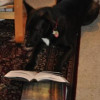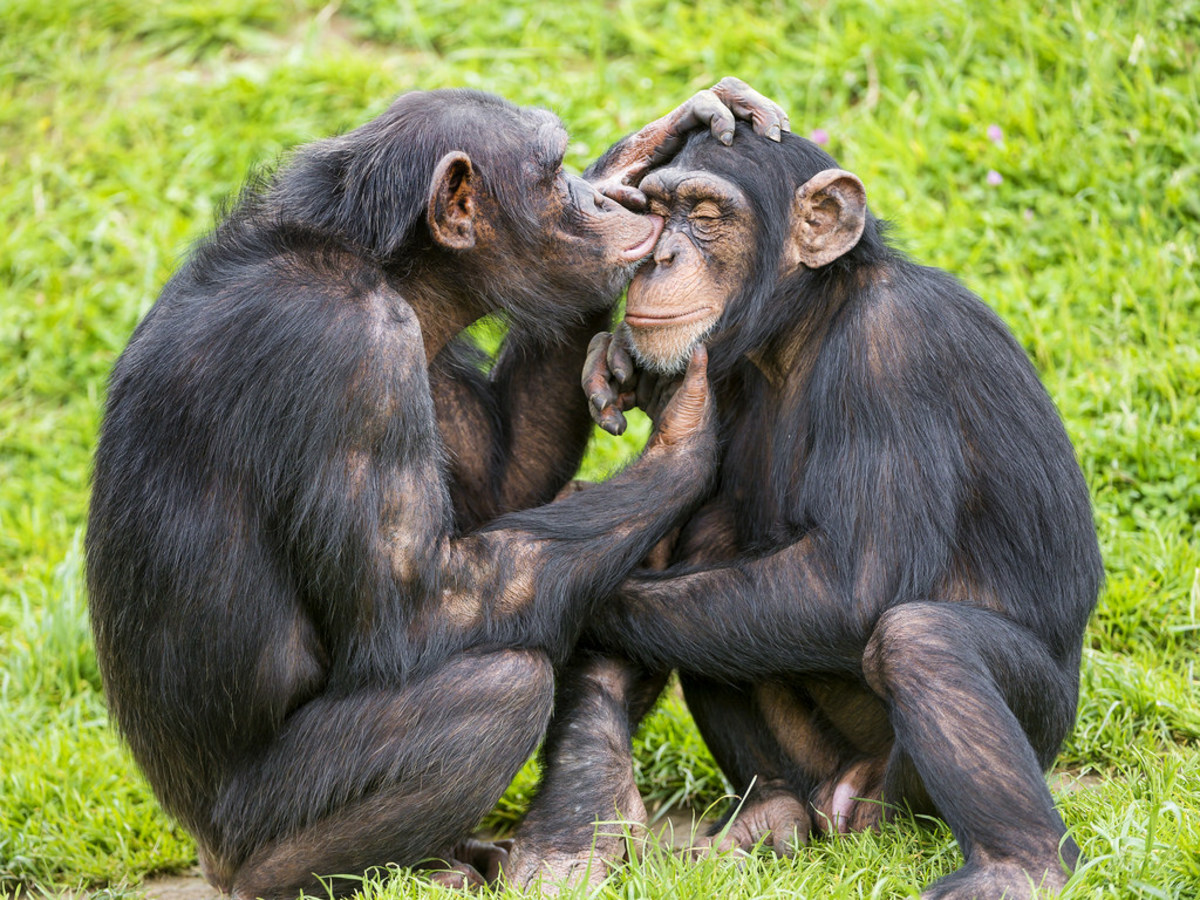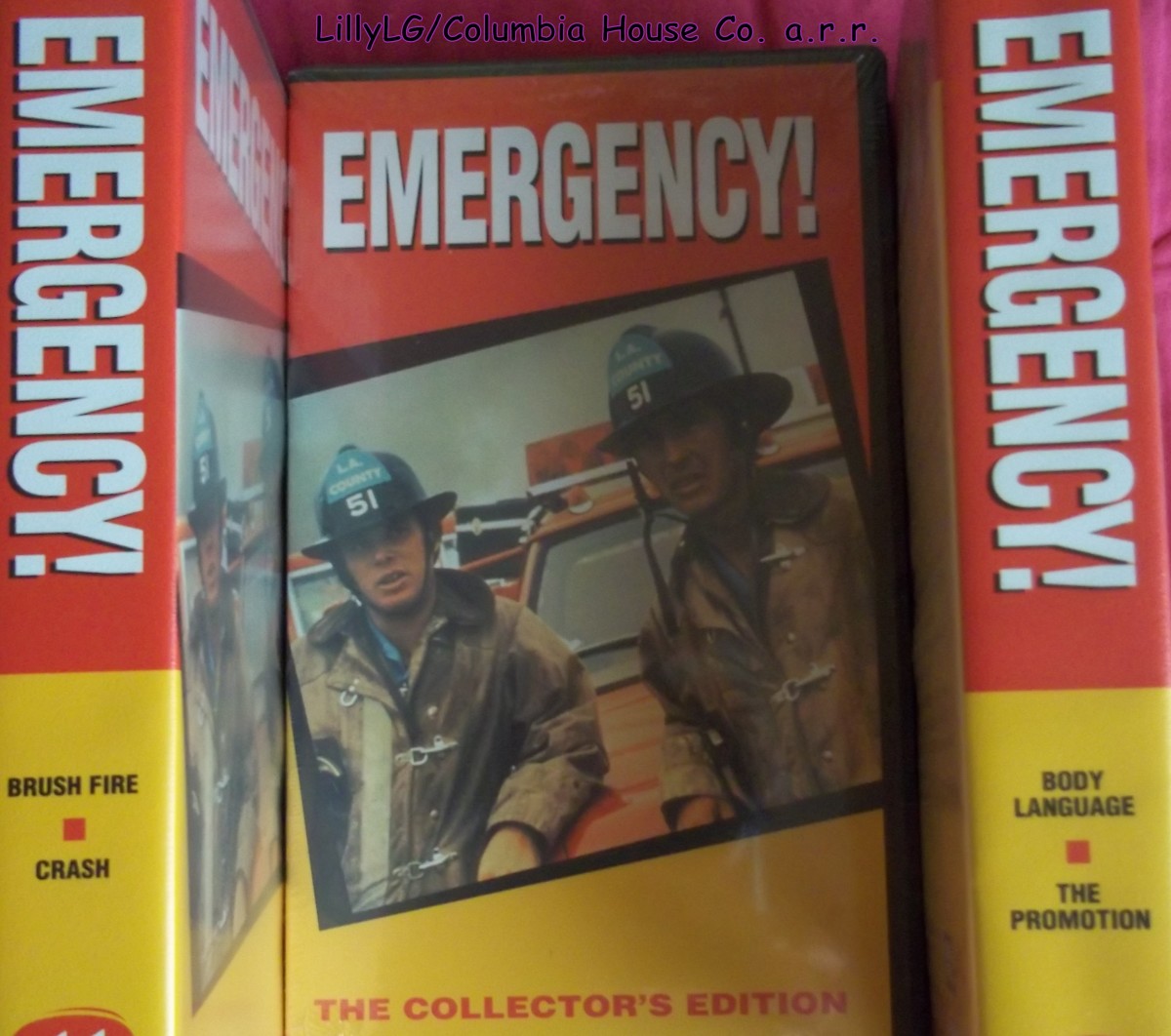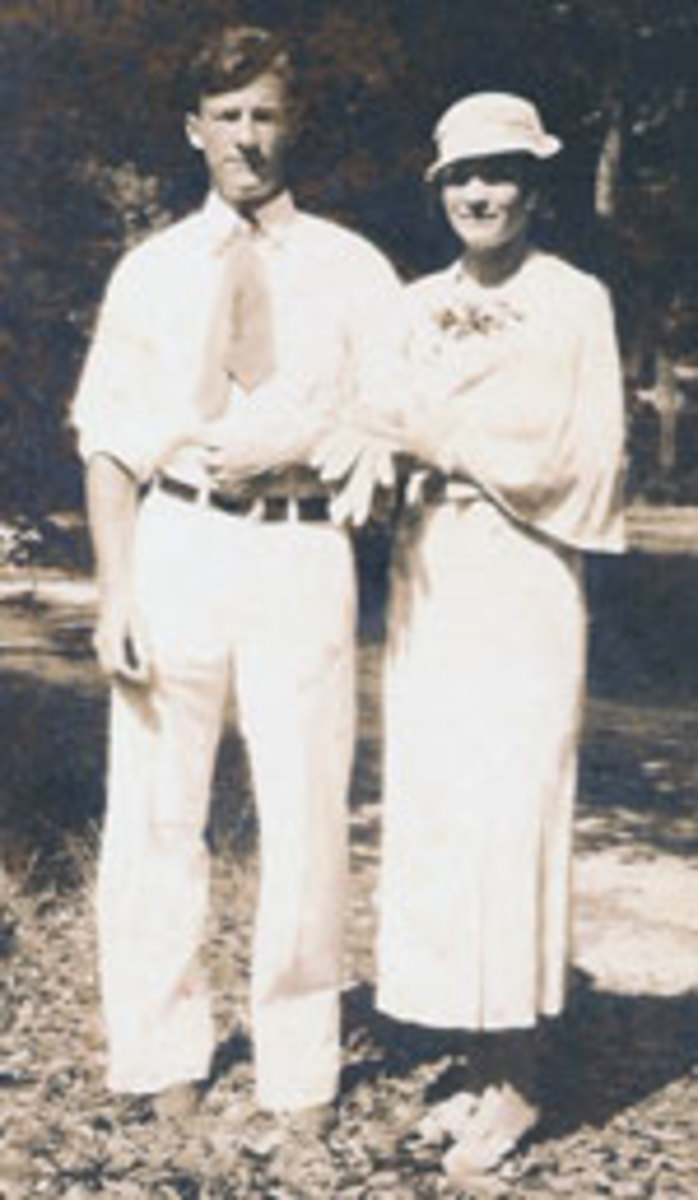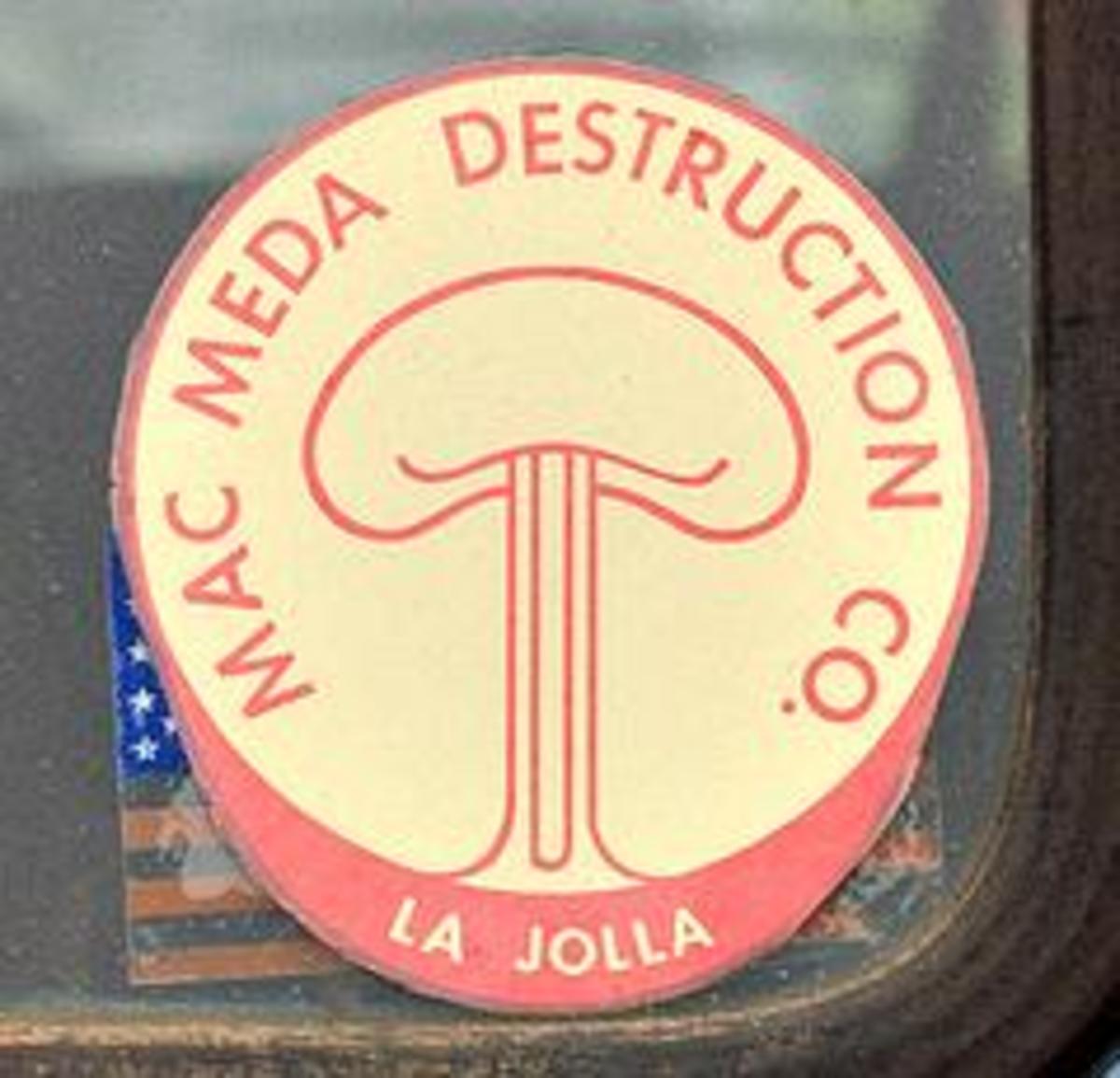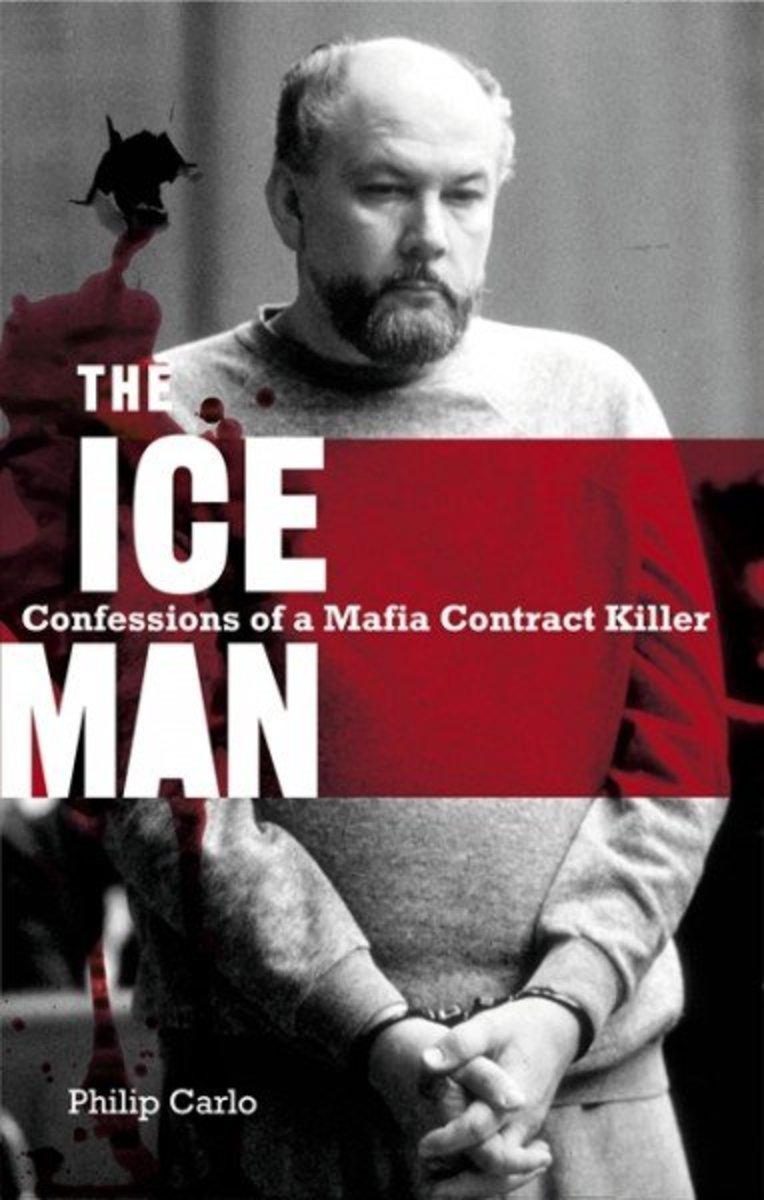- HubPages»
- Books, Literature, and Writing»
- Books & Novels»
- Nonfiction»
- Biographies & Memoirs
Jane Goodall; The Woman Who Redefined Man: Biography
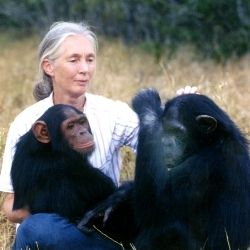
A force to be reckoned with in research and environmental protection
"You can do anything you set your mind to", such is the phrase that every child hears growing up from teachers and parents. Yet how many of us truly live up to that potential? Jane Goodall is the living embodiment of that sentiment who, without advanced formal education, ended up doing more for animals and arguably humans than anyone prior in history and clearly more than anyone thought was possible from a mere woman. As a woman in the 1940s and 50s it was unheard of to take on projects that even today are challenging. She faced tremendous gender biases and with grace and determination, broke down every barrier that was thrown her way by men or nature. She stood up to old world thinking of proper animal observation practices, trying new ideas and never being afraid to fail. And if that was not enough, she shared her passion for protecting the environment with the world forming youth environmental groups and petitioning for protection for Chimpanzees in both the wild and in captivity. This was one tough woman who would not take no for an answer. This is her story...
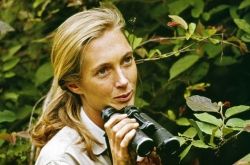
The story of researcher, activist, and larger than life woman
So frequently the name Goodall is simply synonymous with Chimpanzees; it is unfortunate that some of her equally amazing accomplishments are relatively unknown. To look at her history is to look at the modern history of field research as she pioneered most modern methods and wrote most current practices for fieldwork, not to mention how to work with those same animals in captivity. But let's start by going into how it all started when she was just a child.
Jane showed early fascination with animals, filling notebooks with detailed observations of animals one would expect to find in the middle of a major city. While they were amateur in nature, they set the groundwork for a life filled with fieldwork. She was always interested in Africa, and at a young age self-funded a trip to the dark continent as it was known then. The remarkable part of this is a young women traveling to Africa was not a common trip in the 40s, even more interesting was her goal of doing so alone, and her lack of concrete plans once she got there. She had an offer to do relatively safe work with horses in the affluent colonial part of Africa, but instead decided to set out on her own working in the Nairobi museum. Take yourself back for a moment to the 40s when television was just barely making its way out of inventor's laboratories, radio signals were just starting to become common place, even cross-continent air travel was still in the adolescent state. And here comes a woman in her early 20s who decides to travel to Africa, without modern conveniences and communication, and set out on her own to do something extraordinary. This first glimpse of her gumption would continue to serve her well.
She met Louis Leakey who was trying to find a woman to do field research on Chimpanzees, as he believed a woman could get closer to these animals then a male researcher. Keep in mind when Jane was accepted she was the first woman to ever do extended field research (extended was considered more than a month in the field). In fact by law she had to be accompanied by a male who was supposed to protect and take care of her and even that was a tough battle with the male preserve wardens (in actuality she could out-walk and out-last most of her local male support teams). Africa was an unstable region with dangers both in animal, insect and human form. Sadly there were kidnappings that took place both at her camp and others. Notably, Jane Fonda later was kidnapped but eventually tricked her kidnappers and escaped after several days. In addition, a number of Stanford students who were studying in Goodall's research camp were kidnapped in a daring night raid and after much negotiations and possibly money transfers, were eventually also released. Poisonous snakes and insects were common and living hours away from civilization without any means of communication ensured that a bite would almost certainly mean an early and painful death. With this triple threat (specifically the kidnappings) almost all foreign researchers fled the region, yet Jane stayed to continue her work living in the field for years completely immersed in her work. The behaviors that Jane observed, the methods she pioneered, and how she was able to fund all of this unproved research is a fascinating story. This includes the interesting tidbit that Jane observed that Chimpanzees created and used tools, something that was up to that time assumed only a feature of humans. This forced the entire scientific community to reexamine the definition of man versus animal. As if that was not enough, Jane was able to discover that other animals including a bird actually used tools which truly turned the academic field on its head. This was a woman who studied any and every animal in the wilds of Africa, even bringing her tiny children with her bouncing over the Savannah in a jeep chasing after wild animals. Nothing was too difficult or too outrageous for her to pursue.
"The greatest danger to our future is apathy."
- Jane Goodall
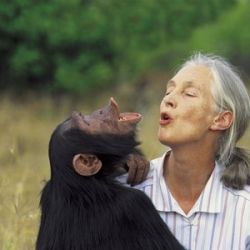
A Pioneer in Research
If it was not impressive enough to be the first woman doing extended field research, she also realized very early on that the current ways to observe animals in the field was terrible outdated. They were based on brief field visits where they would try to attract animals to a key location or build blinds in locations previously visited. The goal was to observe quickly and get home to 'civilization'. Jane, through first hand experiences, knew these techniques had limited value and sometimes provided false natural observations and thus chose to literally write entirely new field manuals on how to observe animals in the wild.
Without a formal education on animal observation or even a college degree, Jane postulated that the more time she spent among the animals the more normal she would appear and thus they would eventually ignore her presence as a non-threat. This would take months, even years to desensitize the animals to her presence before getting the types of observations that she would need for research. With most eminent scientists telling her this was crazy (since most would not want to spend years on end in the field), that is exactly what this high society London born woman did on the shore of Lake Tanganyika. Feeding bananas and following these animals every day, sometimes camping out in the field alone miles away from camp when she was following a particularly interesting group, she became an accepted member of the Chimpanzee community. She would start to make shocking discoveries about these very human like animals, including the occasional cannibalistic tendencies and their complex social community.
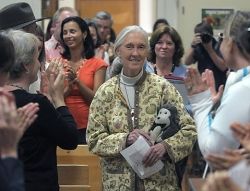
A Champion for Conservation
If Jane Goodall stopped here it would have been truly remarkable, but this woman was not done. She started an environmental organization called Roots and Shoots specifically for children around the world to continue her work long after she had to finish fieldwork. This organization has flourished around the world teaching children about the wonders of the animal kingdom and preservation in general. So large did this group become that Jane, who never liked staying in hotels anyway, rarely stays in hotels but is put up by local chapter members almost anywhere in the world. She encouraged African countries to setup eco-friendly tourist organizations to expose more people to the wonders of the animals in Africa.
She traveled around the world visiting zoos and research facilities that used Chimpanzees, using her long earned expertise, tirelessly educating them on how to work safely with these animals in a manner that provided them the best possible environments. She understood that medical research and having animals in zoos for others to learn more about especially for those who could never go to Africa was important. As a pragmatist she wanted to create the best possible situation for both humans AND Chimpanzees. When funds were short, she would use her own for wealth was never her goal. She never lost sight of her goal to change the world and as always by dreaming big, she achieved tremendous results.
This biography by Dale Peterson is wonderfully written book with fascinating dialogue and vivid portrayal of events. You may find yourself getting emotionally entangled not just with the leading subject, but also with the Chimpanzees who Dale personifies and humanizes. Jane opened a tremendous window into the animal world for us all to learn more; Dale opened an equivalent window in Jane's life and accomplishments. Even after 800+ pages, somehow you will finish wanting more since we know the story is not done, yet we loved the journey we just finished. I would strongly recommend picking up this book and taking the time to learn more about a fascinating woman. You might learn a few things about humanity as you read about Chimpanzees.
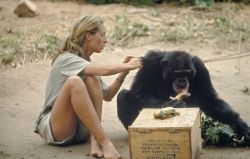
What we can learn from Jane's Story
I think there are a couple of key items that we all could take away from this story. First, Jane Goodall never let an obstacle stop her from pursuing her dreams. Whenever someone told her no, she learned why they said no and figured out a way around it. This tenacity is what set her apart and is something I feel we could all try in our own lives. When we hear no, instead of fighting and complaining, find out why we are hearing no and work to overcome. Never let gender, ethnicity, or age hold us down, instead do everything we can to overcome and build something better for ourselves and our community.
Second, given her tenacity in helping the environment it is no surprise that the next lesson be environmental. One of the items I found so fascinating about Goodall compared to others is her pragmatic approach toward the environment. She knew that one could not protect all of nature and still advance societies. Her goal was to always find a middle ground that helped nature and man. For us, more than environmental issues, I think we can all learn to try to find win-win situations in life knowing that rarely will a successful result be simply what one side wants. Learn to see the other side and sometimes give up a little to come to a happy middle.
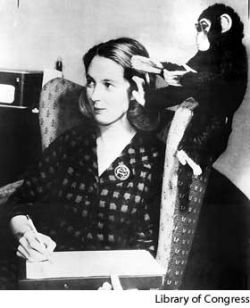
Interesting quotes
"The greatest danger to our future is apathy." -- Jane Goodall
" People say to me so often, "Jane how can you be so peaceful when everywhere around you people want books signed, people are asking these questions and yet you seem peaceful," and I always answer that it is the peace of the forest that I carry inside." -- Jane Goodall
"If you really want something, and really work hard, and take advantage of opportunities, and never give up, you will find a way." - Jane Goodall
"Time spent in the forests, following and watching and simply being with the chimpanzees, has always sustained the inner core of my being. And it did not fail me then. In the forest, death is not hidden -- or only accidentally, by the fallen leaves. It is all around you all the time, a part of the endless cycle of life. Chimpanzees are born, they grow older, they get sick and they die. And always there are the young ones to carry on the life of the species. These things brought a sense of perspective back into my life, and with it peace. Gradually, my sense of loss was purged of bitterness, and the futile railing against fate was stilled." -- Jane Goodall
Jane always refused to go to bed mad at anyone. She liked to say as a child, "Let not the sun set on thy wrath"
It all starts with YOU!
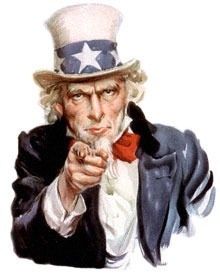
While I hope you learned something about this remarkable woman, I sincerely hope that you take action based on what you learned today. Protecting animals and their habitat is something that can not be postponed for a decade, a year, or even a month. You need to start now! Some options
* Get involved in political activities which can be as simple as joining WWF mailing list which notifies you when there are environmental issues up for discussion in the US government and who you can write to about them.
* Participate in clean-ups in your community which keep trash out of our rivers, lakes, and oceans
* Donate to worth causes including the Jane Goodall Institute
It all starts with a single step or a single action. Please don't put it off.
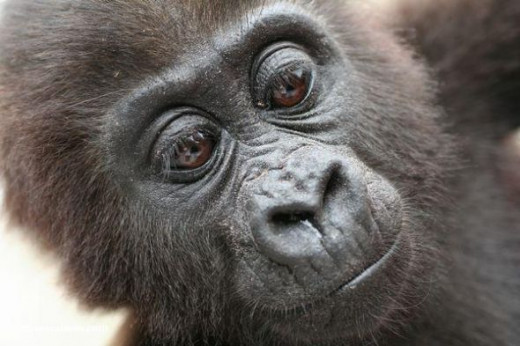
Do you feel animals should be brought to zoos to expose them to a wider audience
Great video retrospective of Jane Goodall in Africa
Great additional information on Jane Goodall
- Biography from biograpy.com
A quick review of her life from biography channel. - Biography from other interesting sources
A quick review of her life from encyclopedia of interesting biographies.
